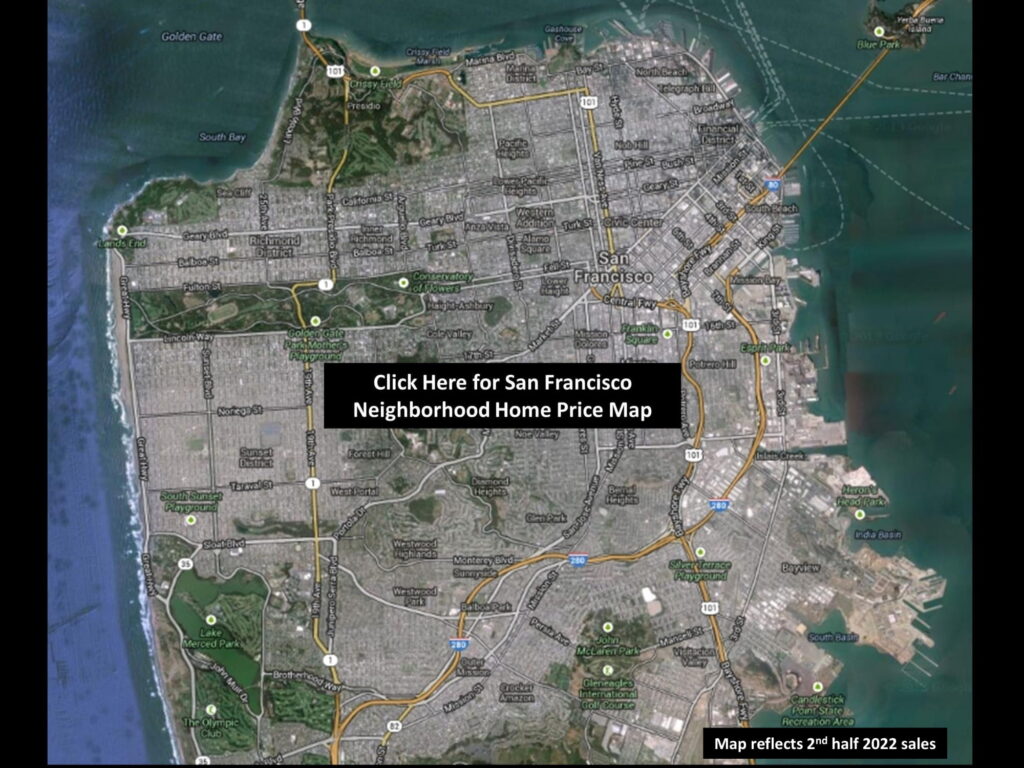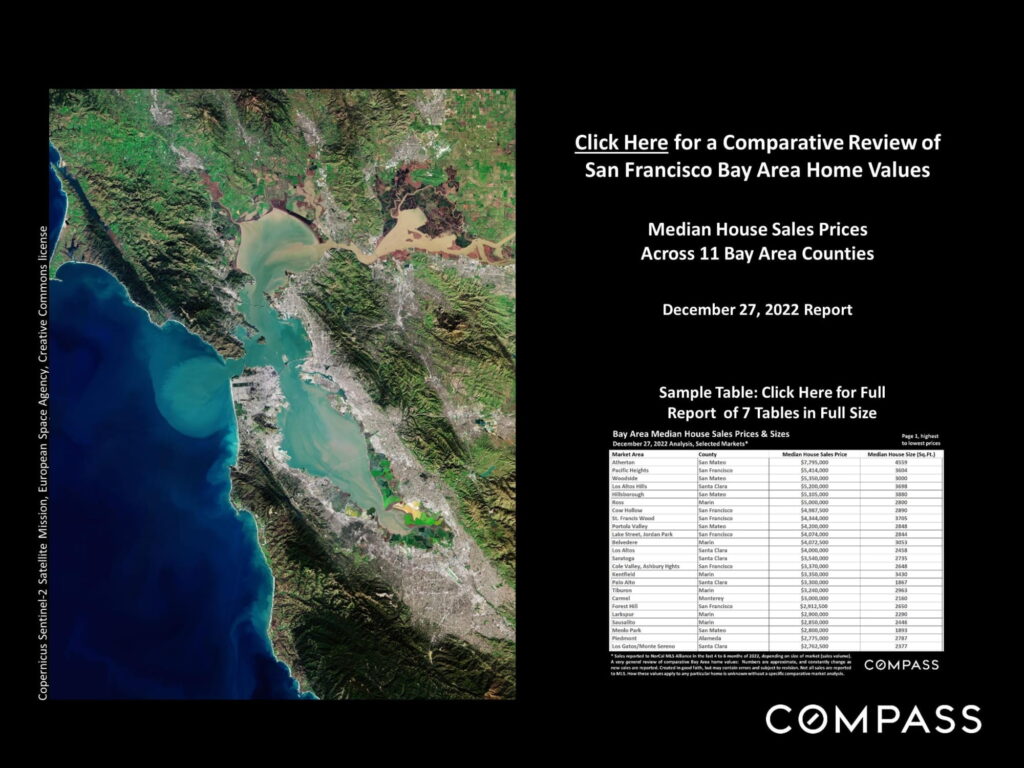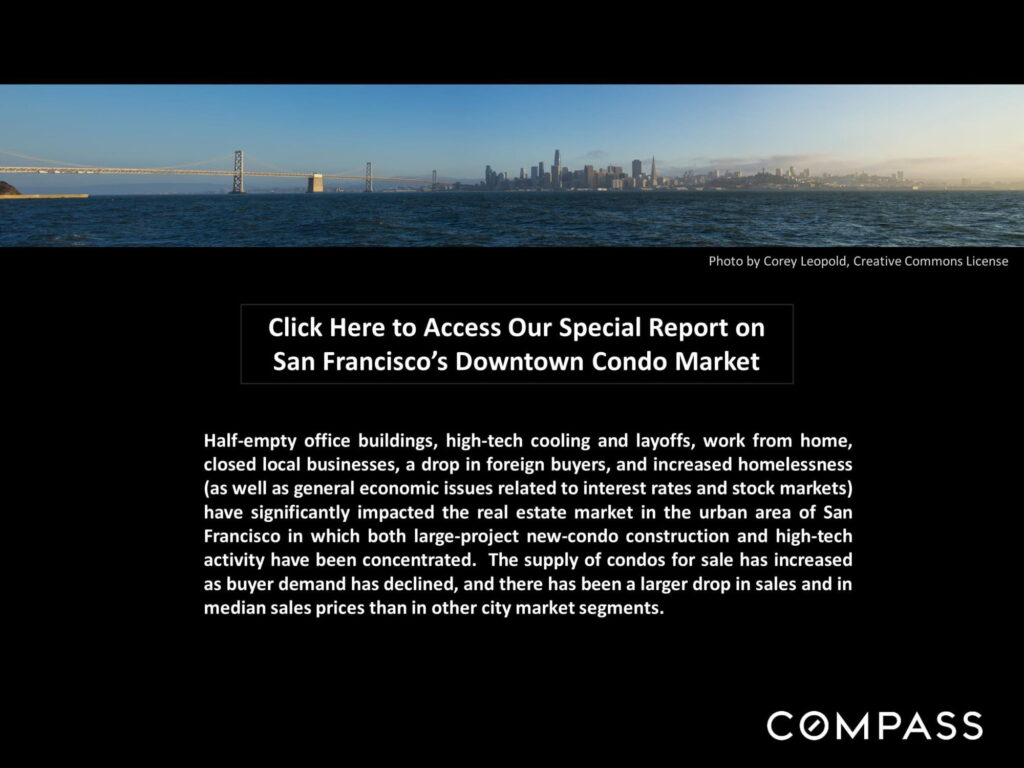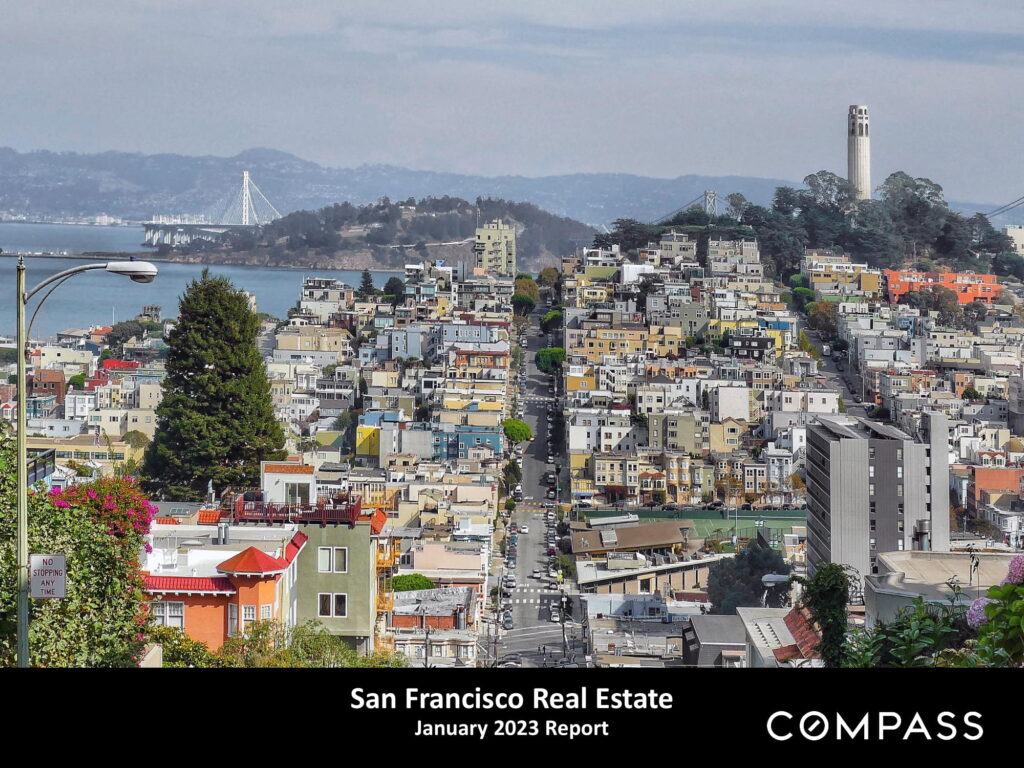
2022 Review of Selected Indicators
Real Estate Market Statistics, Comparing Q4 2022 to Q4 2021
- Quarterly Median House Sales Price: Down 13.5% from Q4 2021
- Quarterly Median Condo Sales Price: Down 12.5% from Q4 2021
- Quarterly Sales Volume: Down 42%
- % of Sales over Final List Price: 43%, down from 66% in Q4 2021
- Avg. Sales Price to Original List Price %: 100% (at list price), down from 108% in Q4 2021
- Average Days on Market: 44 days, up from 34 days in Q4 2021
- Absorption Rate (% of listings into contract): 36% of listings, down from 49% in Q4 2021
- Luxury Home Sales Volume, Sales $3 Million+: Down 52% from Q4 2021
Major Economic Indicators in 2022 - Weekly Avg. 30-Year Mortgage Rate: Climbed from 3.11% to 6.42% (but is down from
7.08% peak in November 2022) - Consumer Price Index (inflation rate): January to November, dropped from 7.5% to 7.1% (It
is down from the 9% peak in June 2022, but up from 1.4% in January 2020.) - Stock Index: Opening to the closing bell in 2022, down approximately 19.4%
- Nasdaq Stock Index: Opening to the closing bell in 2022, down approximately 33.5%
- Employment: Bay Area unemployment rates remain close to historic lows.
(According to the WSJ, “Most laid-off tech workers are finding jobs shortly after beginning their search”). Annual median house price changes – 2021 to 2022 – can also be found within this report.
“Mortgage application activity sunk to a quarter-century low this week as high mortgage rates continue to weaken the housing market. While mortgage market activity has significantly shrunk over the last year, inflationary pressures are easing and should lead to lower mortgage rates in 2023. Homebuyers are waiting for rates to decrease more significantly, and when they do, a strong job market and a large demographic tailwind of Millennial renters will provide support to the purchase market.” FHLMC, 1/5/2023
In 2022, the market saw a dramatic shift from Q2 (spring), at which time the market peaked after a dramatic 10-year upcycle supercharged at its end by the pandemic boom, through the 2nd half of the year, when the market cooled significantly. Prompted by a number of economic factors – especially inflation and
interest rates, and financial markets – this played out in substantial declines in sales volumes, median sales prices, appreciation rates, and virtually all the standard measurements of buyer demand. However, tens of thousands of Bay Area homes continued to sell in the 2nd half, a considerable, but declining percentage
still selling quickly at over asking price. On the other hand, some buyers are making the best deals in years. For sellers, pricing, preparation and marketing are now critical, while buyers shouldn’t hesitate to negotiate aggressively, especially on homes with longer days-on-market.
The period from just before Thanksgiving through mid-January usually sees the lowest levels of listing and offer-acceptance activity of the year, so it’s difficult to derive definitive conclusions about market trends from its numbers. The early spring house market – which, weather cooperating, can begin as early as February in the Bay Area – would typically provide the next major indicator of market direction, but developments may occur sooner to provide increased clarity regarding what awaits us in 2023. For the time being, the market remains in a period of adjustment, with major macroeconomic conditions still in flux.
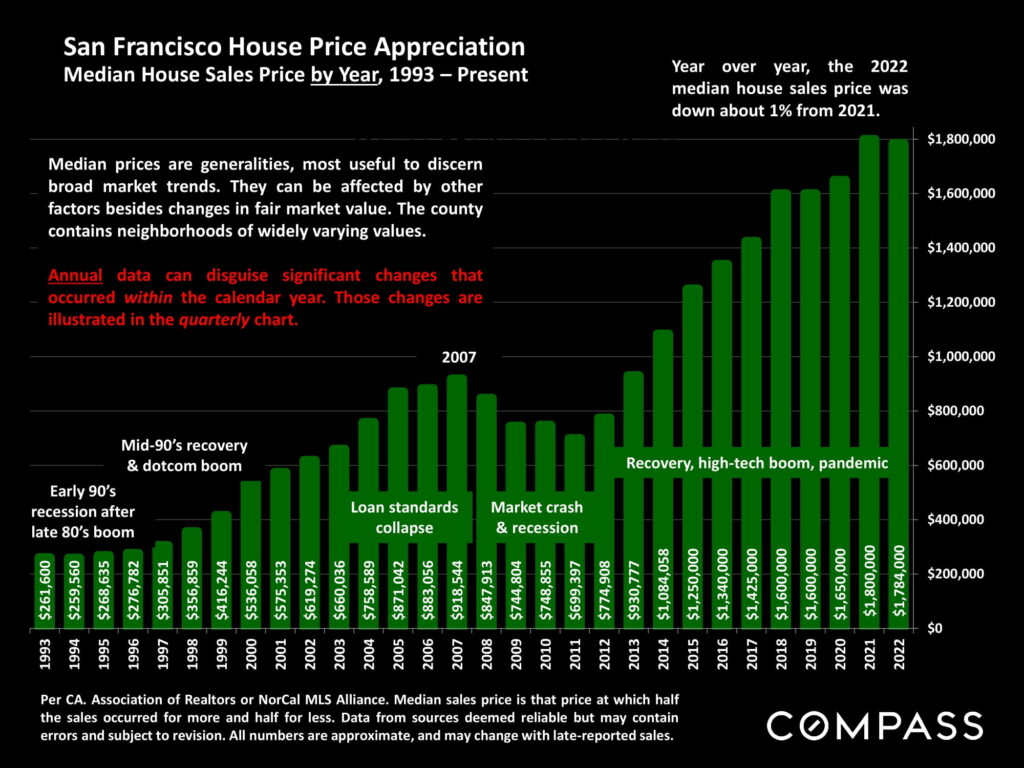
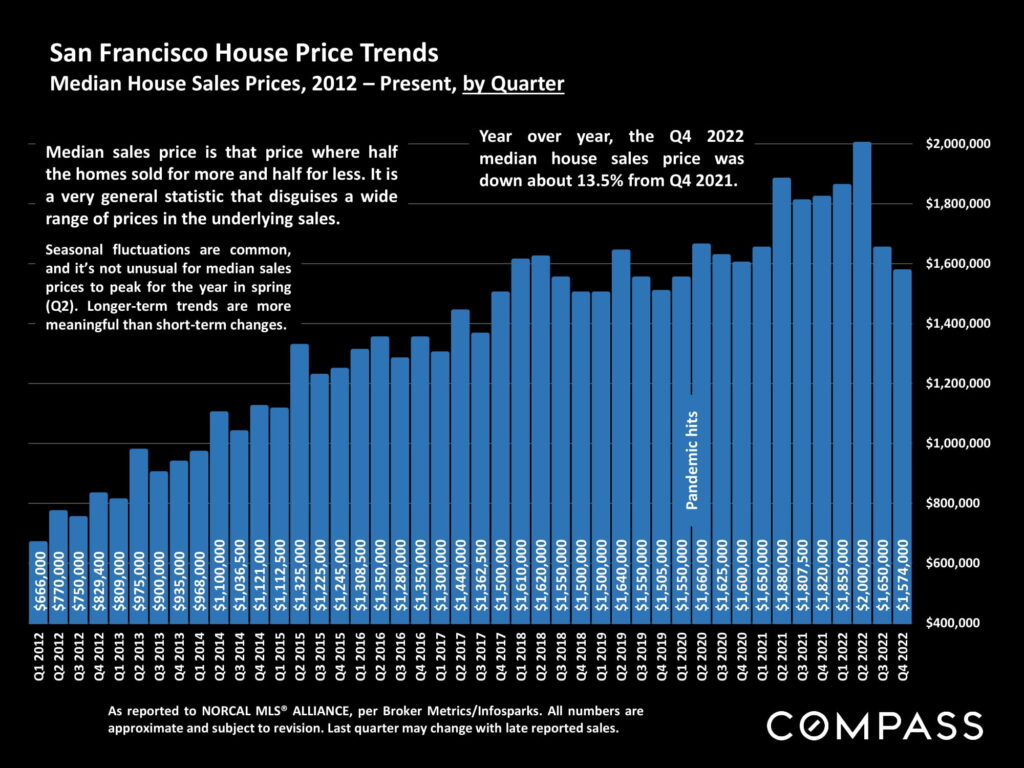
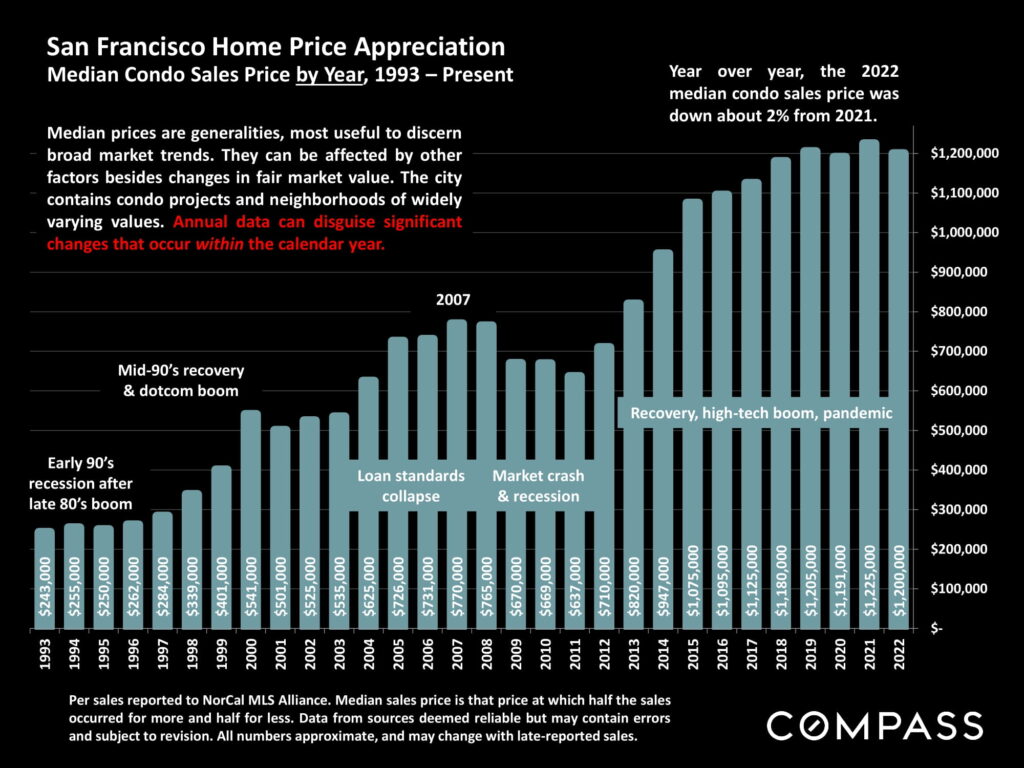
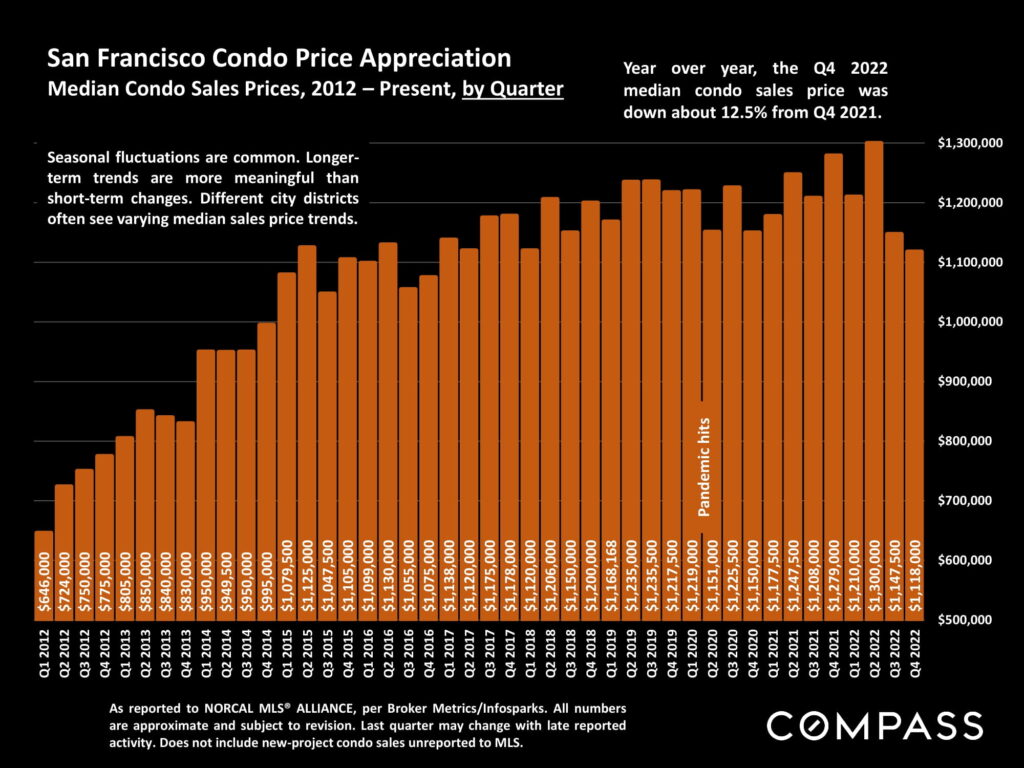
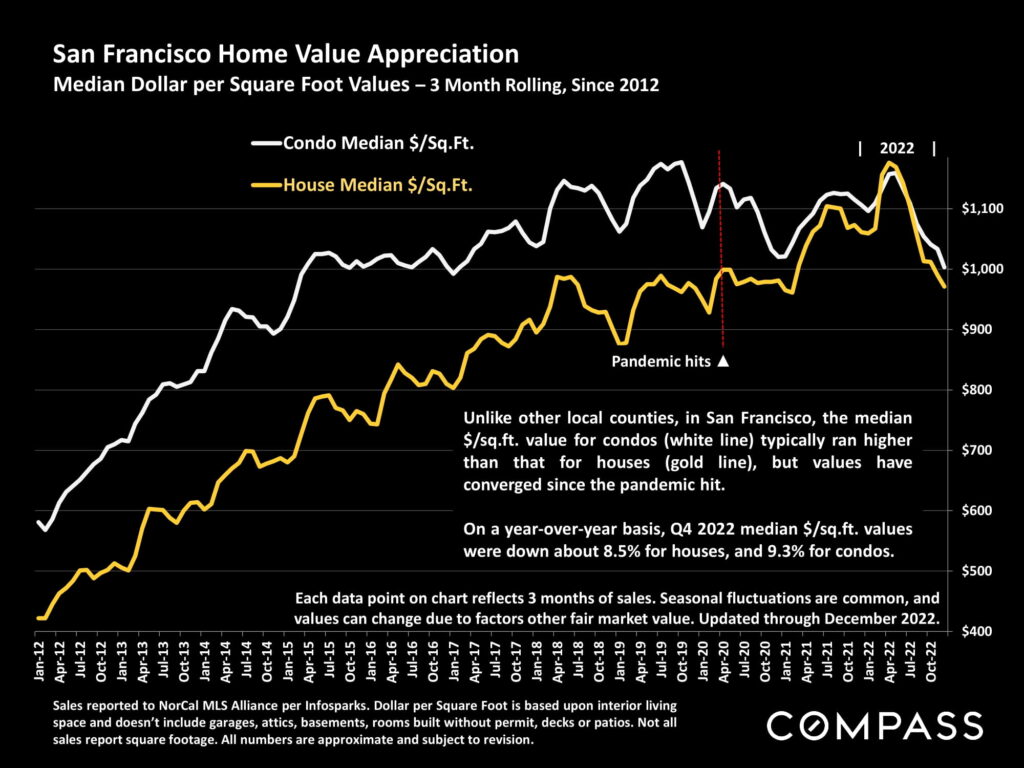
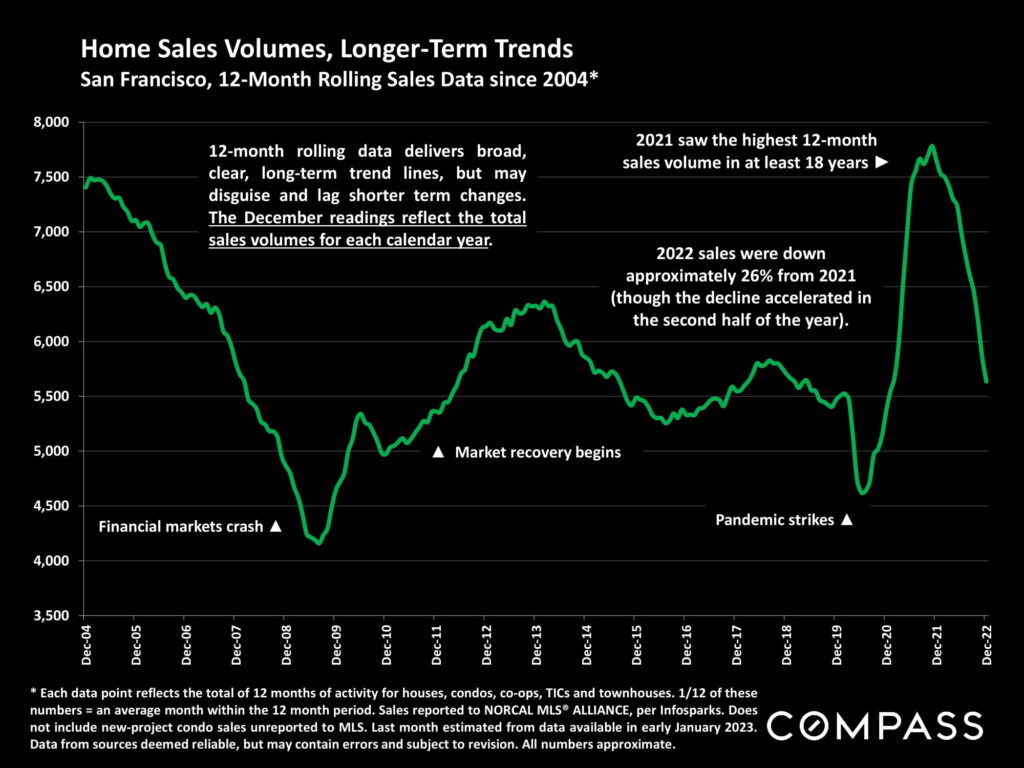
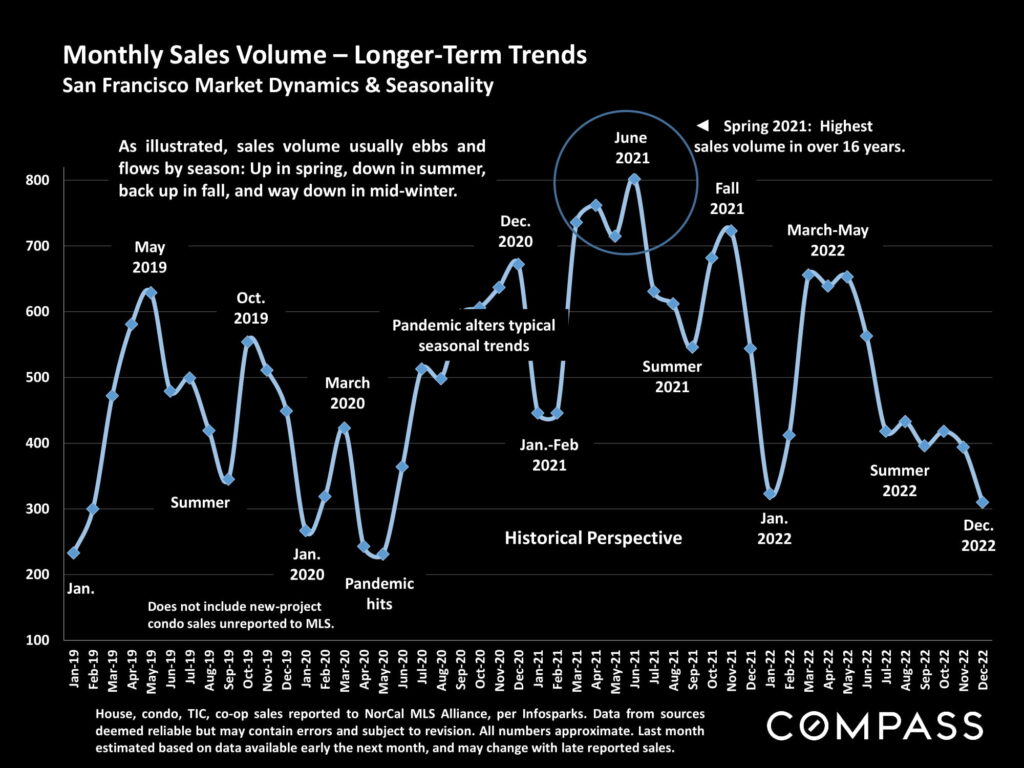
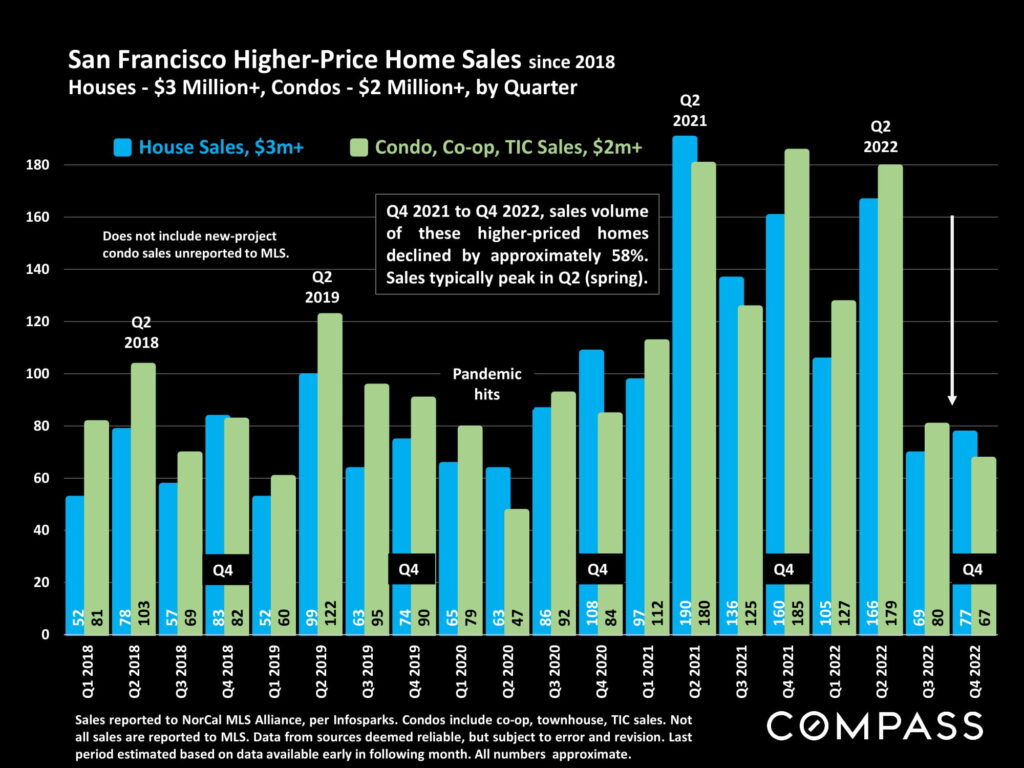
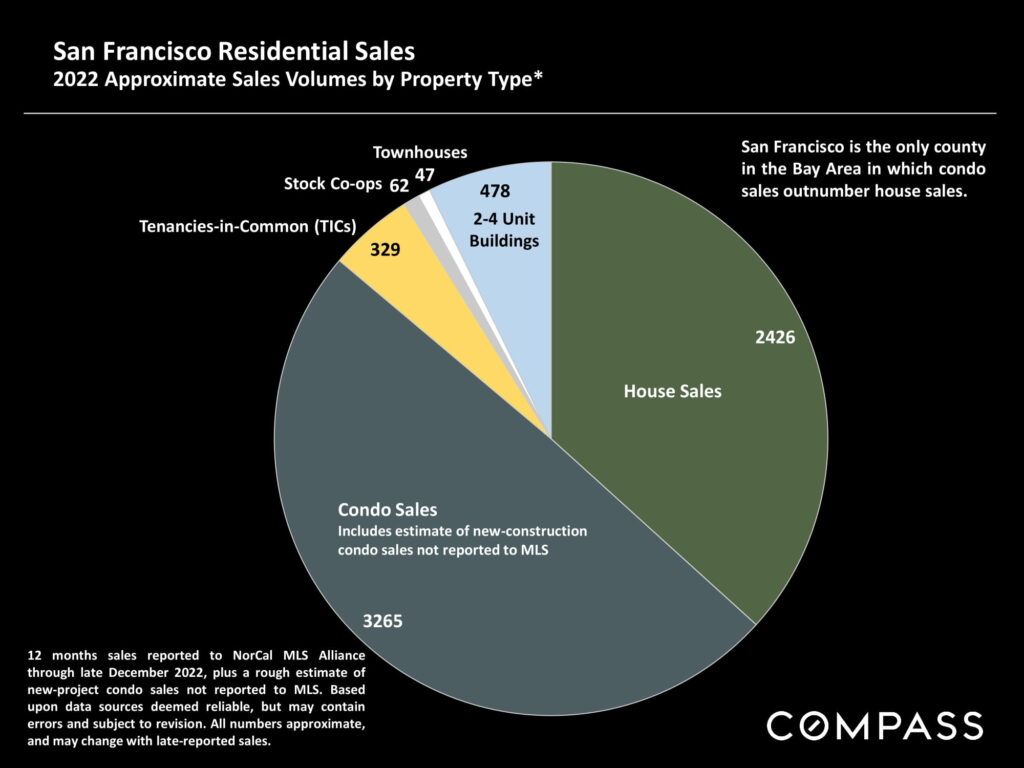
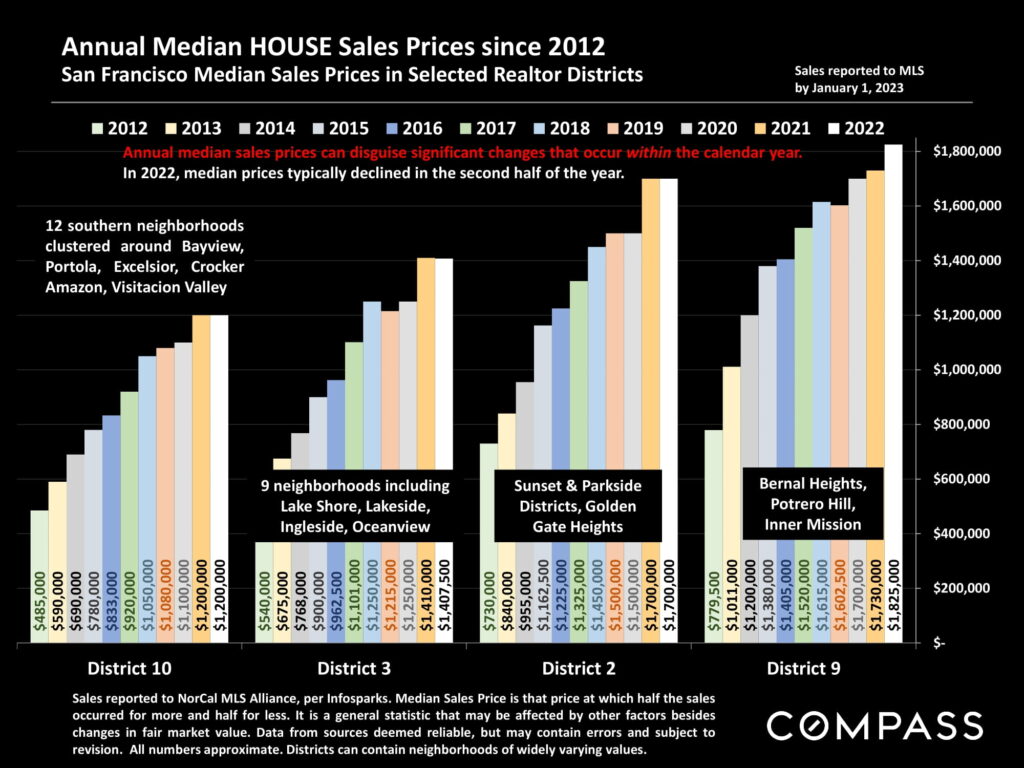
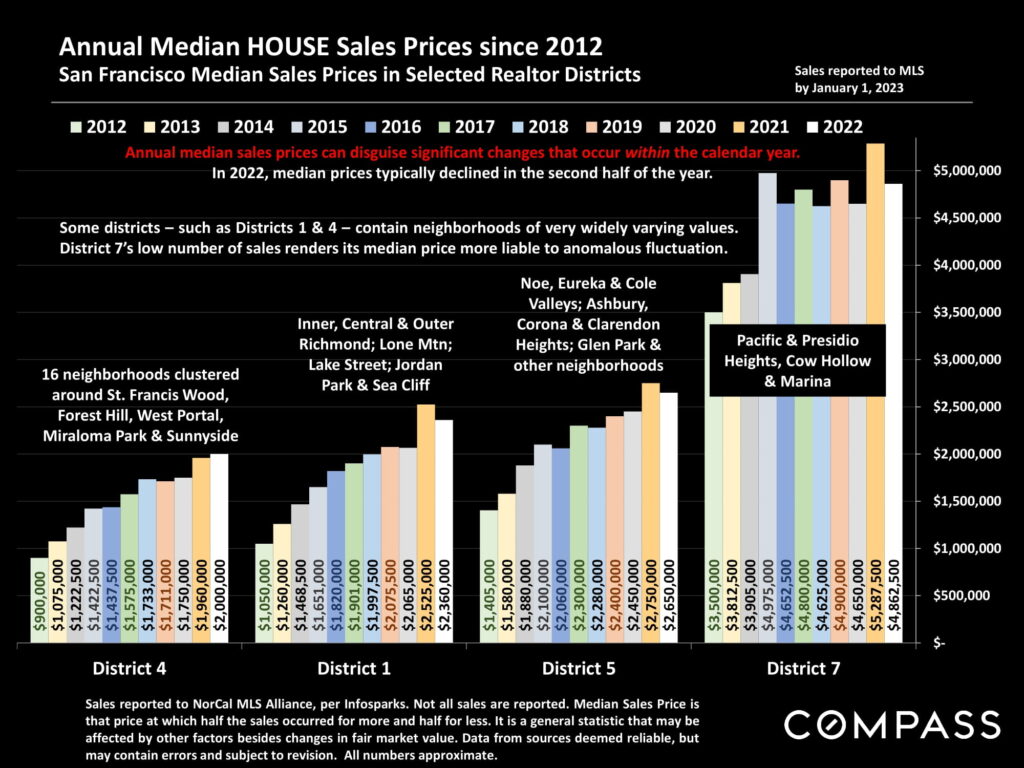
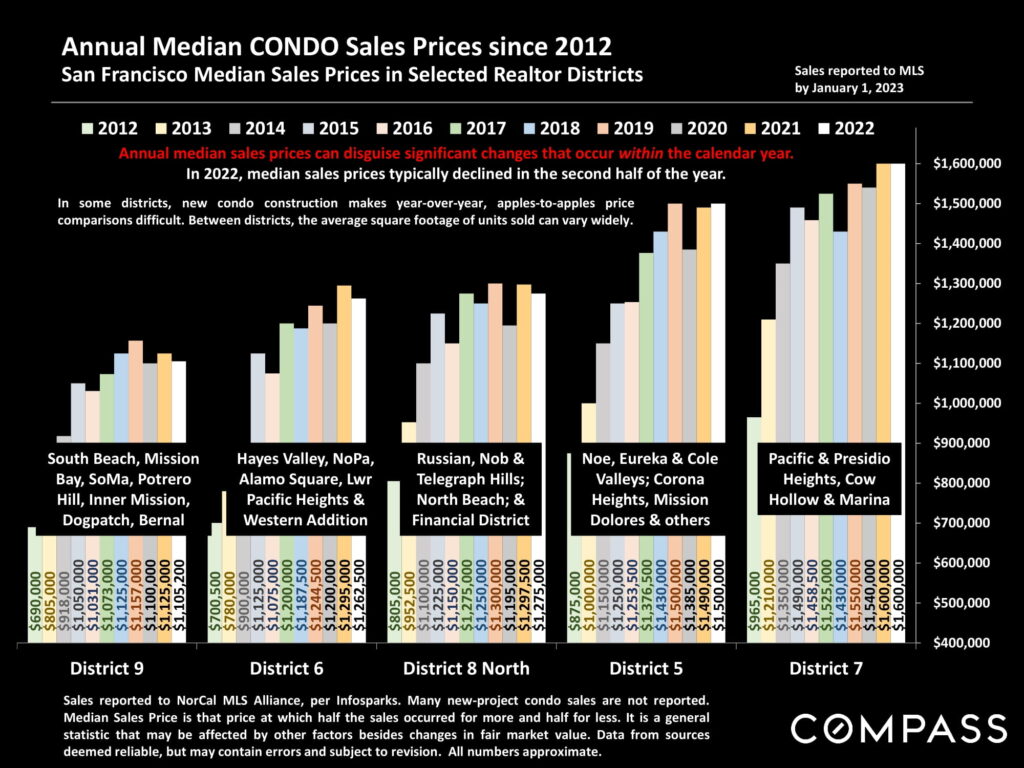
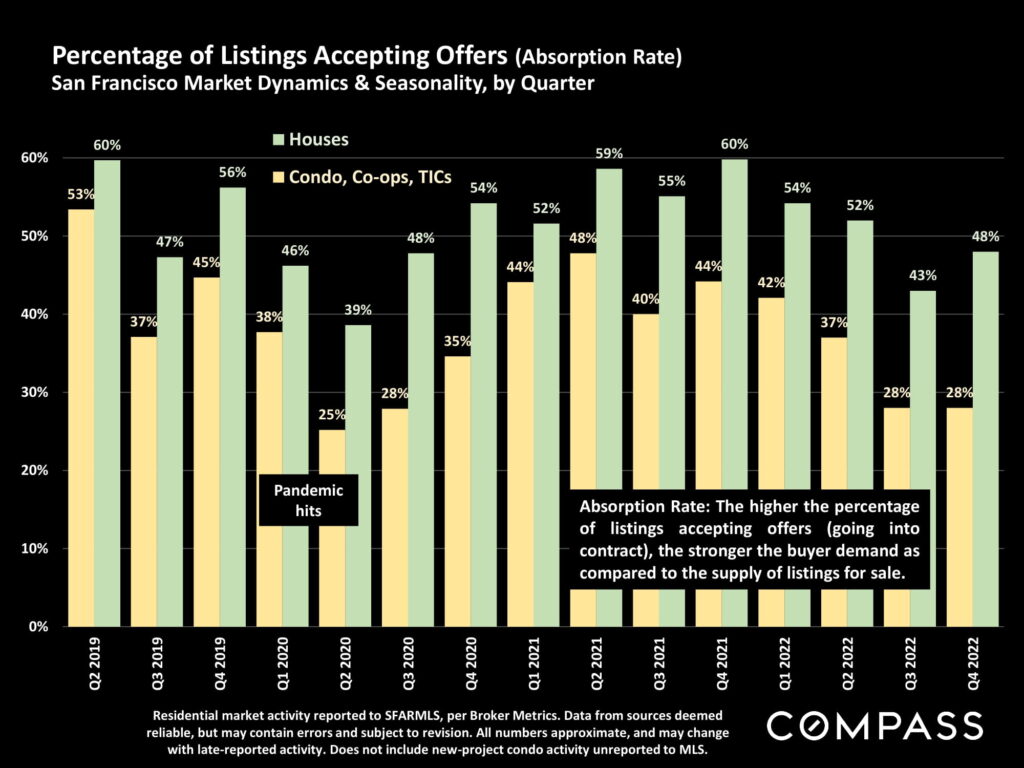
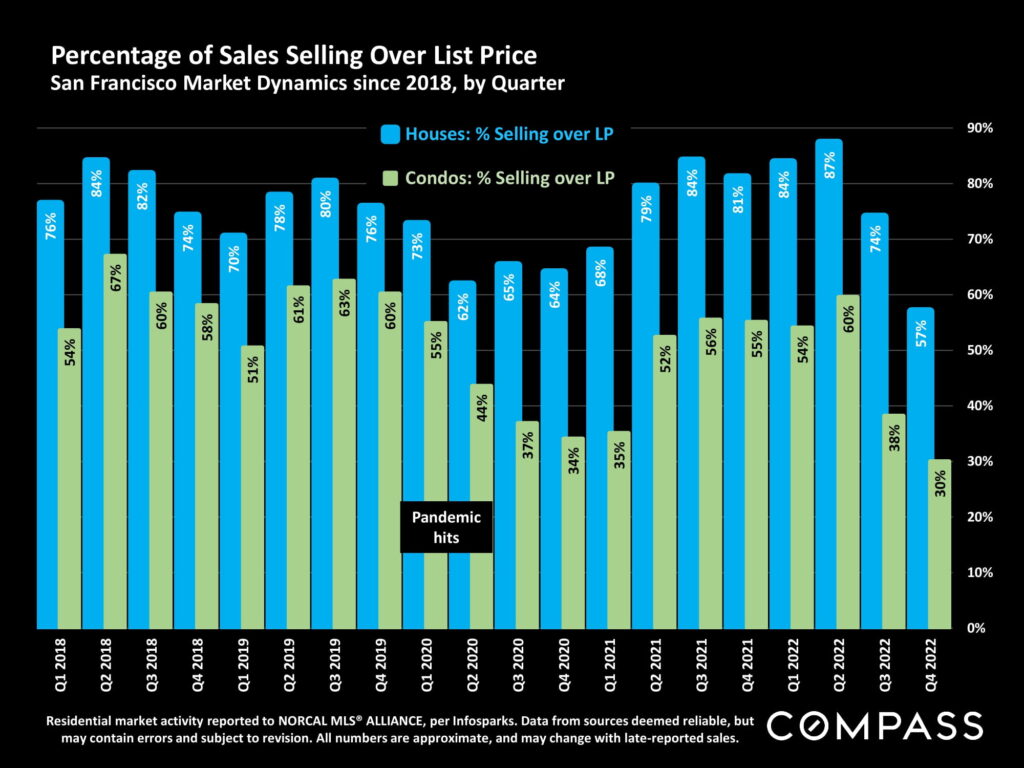
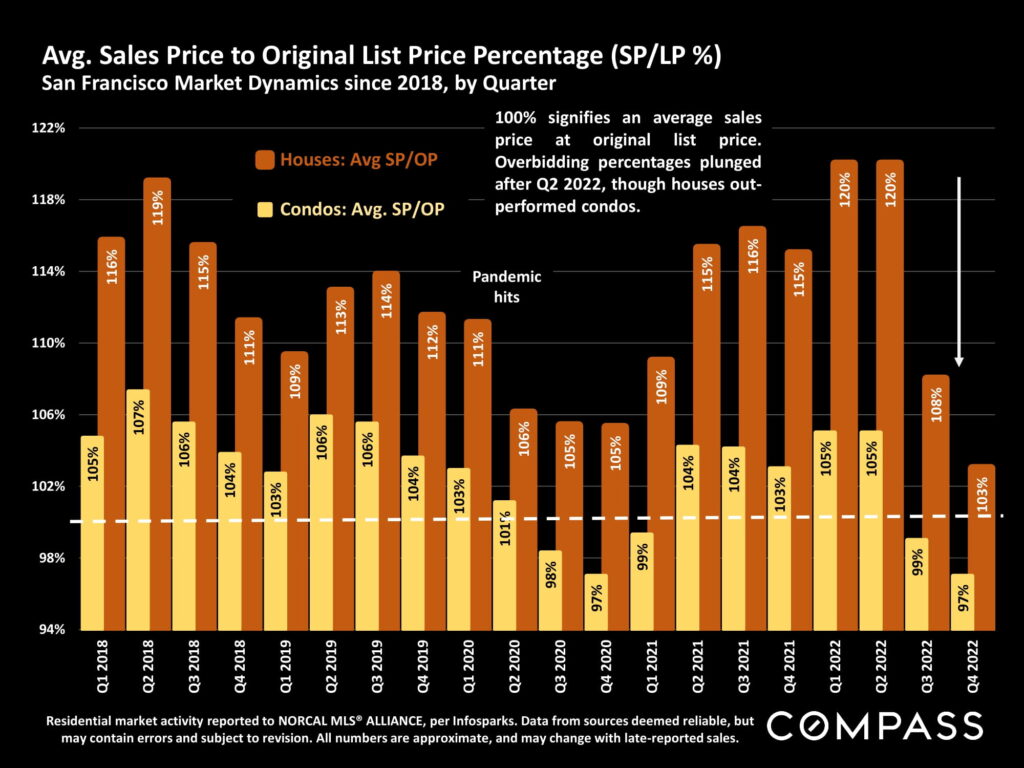
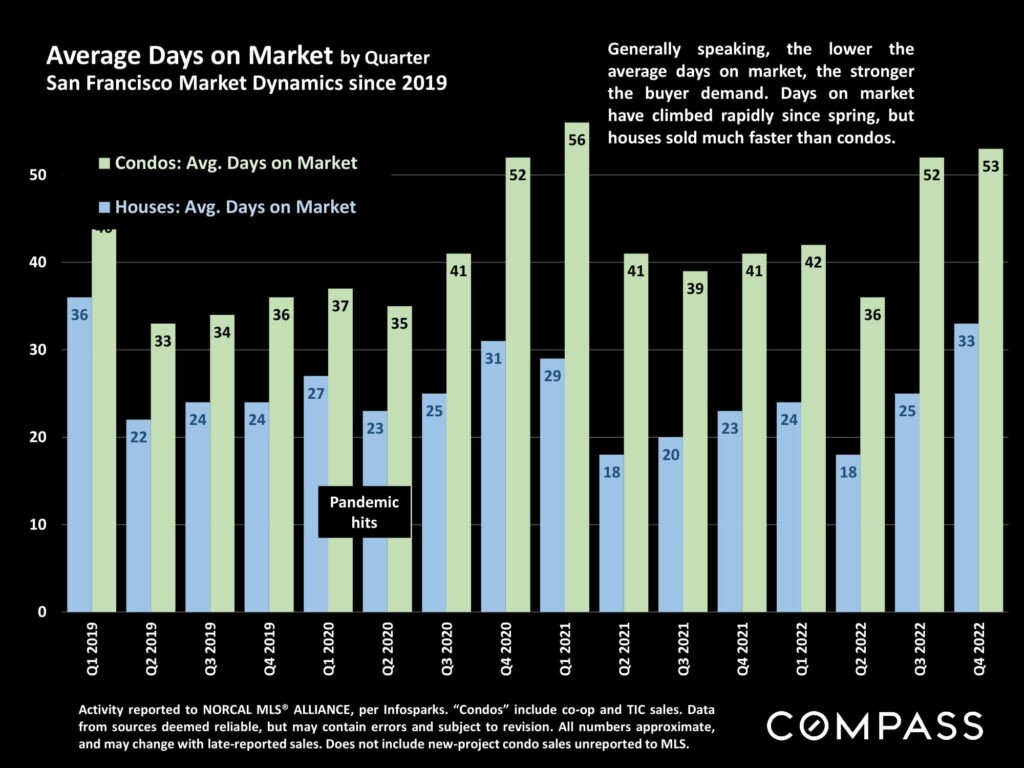
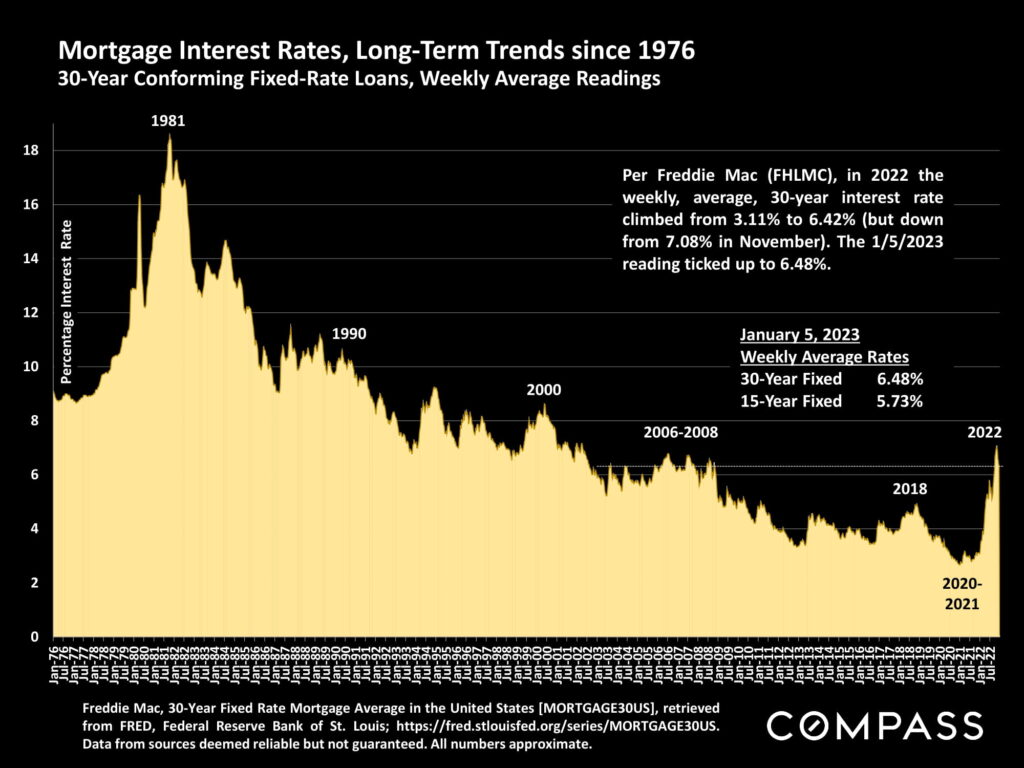
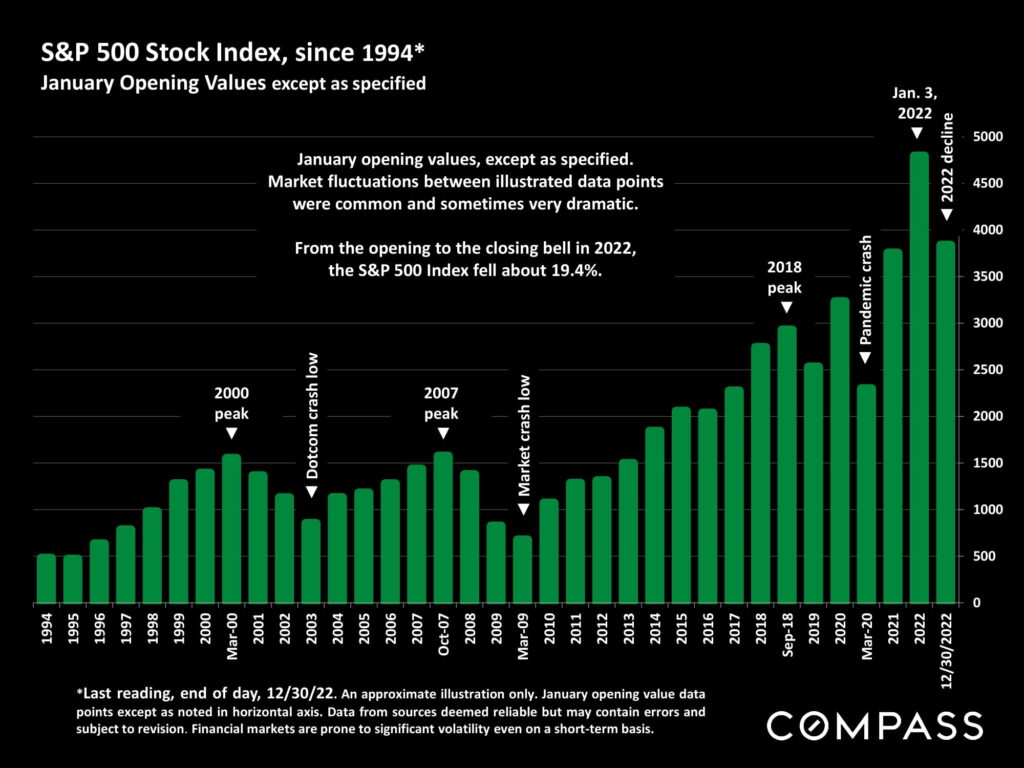
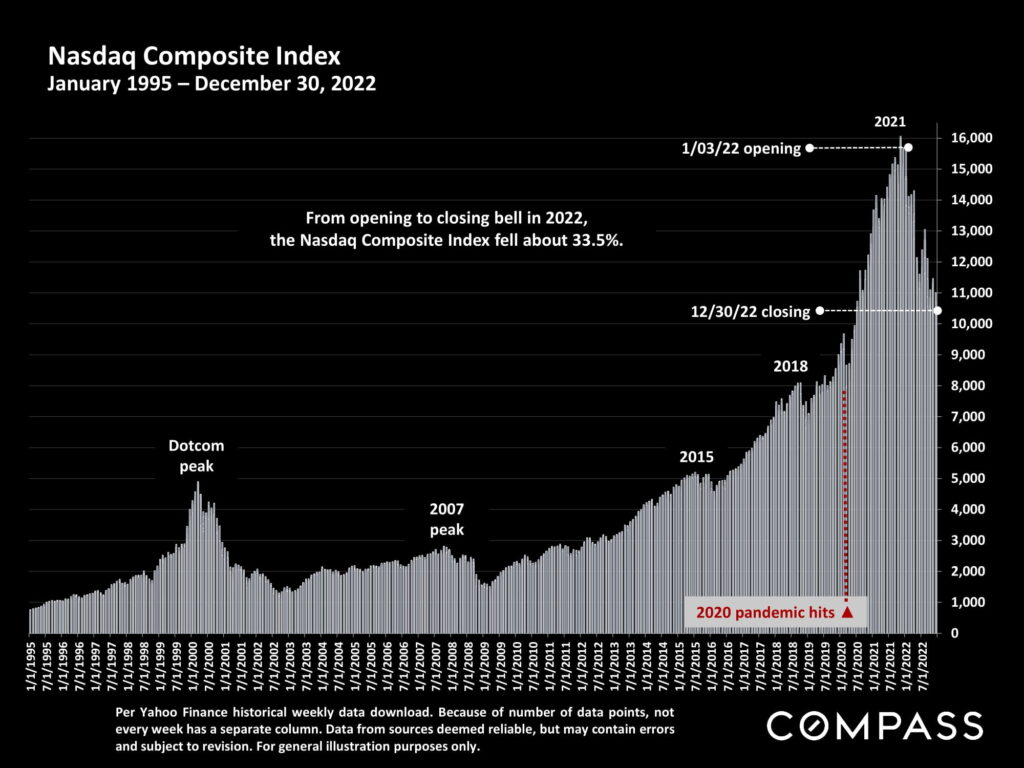
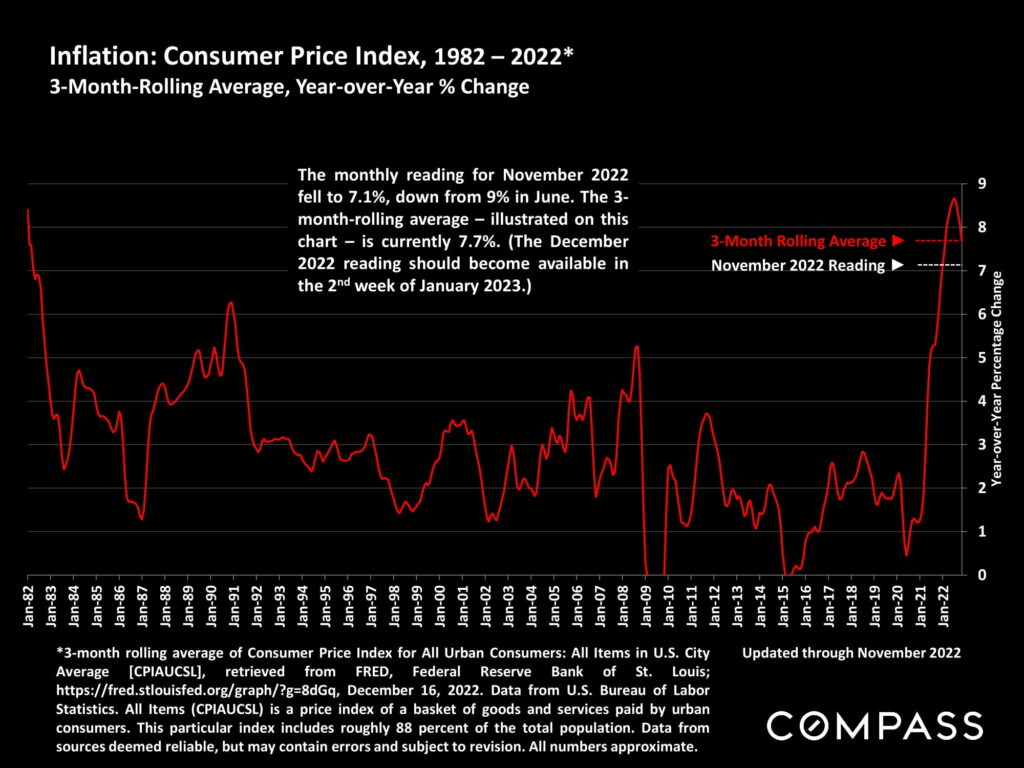
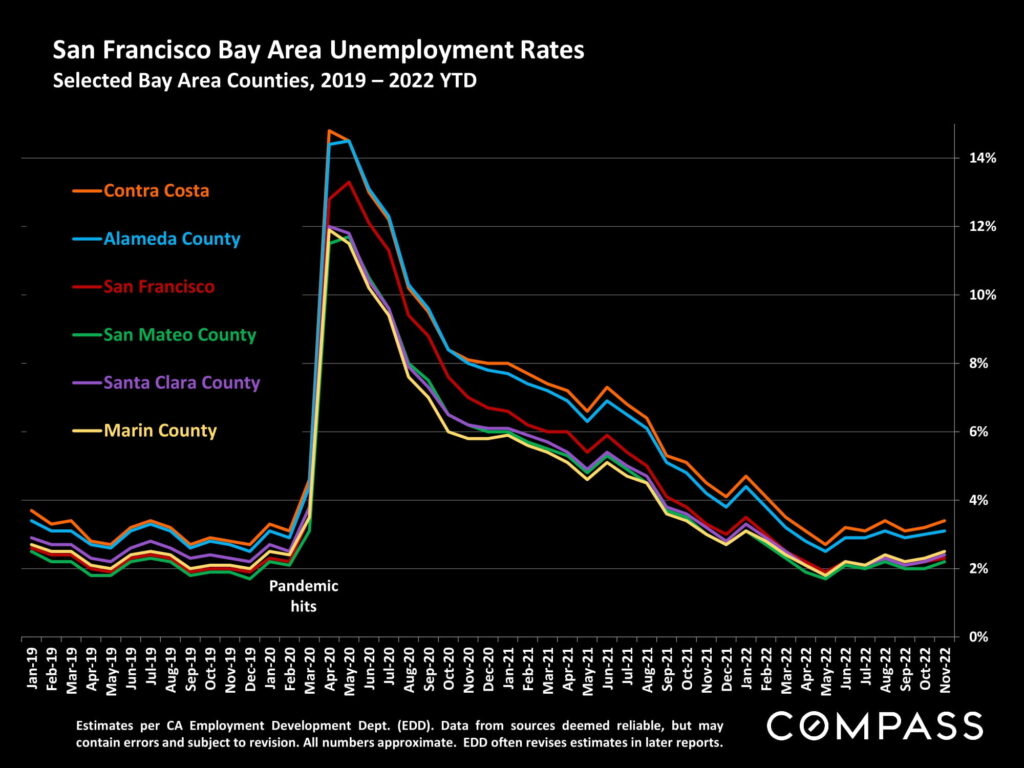
Statistics are generalities, essentially summaries of widely disparate data generated by dozens, hundreds or thousands of unique, individual sales occurring within different time periods. They are best seen not as precise measurements, but as broad, comparative indicators, with reasonable margins of error. Anomalous fluctuations in statistics are not uncommon, especially in smaller, expensive market segments. Last-period data should be considered estimates that may change with late-reported data. Different analytics programs sometimes define statistics – such as “active listings,” “days on market,” and “months supply of inventory” – differently: what is most meaningful are not specific calculations but the trends they illustrate. Most listing and sales data derives from the local or regional multi-listing service (MLS) of the area specified in the analysis, but not all listings or sales are reported to MLS and these won’t be reflected in the data. “Homes” signifies real-property, single-household housing units: houses, condos, co-ops, townhouses, duets and TICs (but not mobile homes), as applicable to each housing market. City/town names refer specifically to the named cities and towns unless otherwise delineated. Multi-county metro areas will be specified as such. Data from sources deemed reliable, but may contain errors and are subject to revision. All numbers are to be considered approximate.
Many aspects of value cannot be adequately reflected in median and average statistics: curb appeal, age, condition, amenities, views, lot size, quality of outdoor space, “bonus” rooms, additional parking, quality of location within the neighborhood, and so on. How any of these statistics apply to any particular home is unknown without a specific comparative market analysis.
Median Sales Price is the price at which half the properties are sold for more and half for less. It may be affected by seasonality, “unusual” events, or changes in inventory and buying trends, as well as by changes in fair market value. The median sales price for an area will often conceal an enormous variety of sales prices in the underlying individual sales.
Dollar per Square Foot is based upon the home’s interior living space and does not include garages, unfinished attics and basements, rooms built without permit, patios, decks or yards (though all those can add value to a home). These figures are usually derived from appraisals or tax records, but are sometimes unreliable (especially for older homes) or unreported altogether. The calculation can only be made on those home sales that reported square footage.

